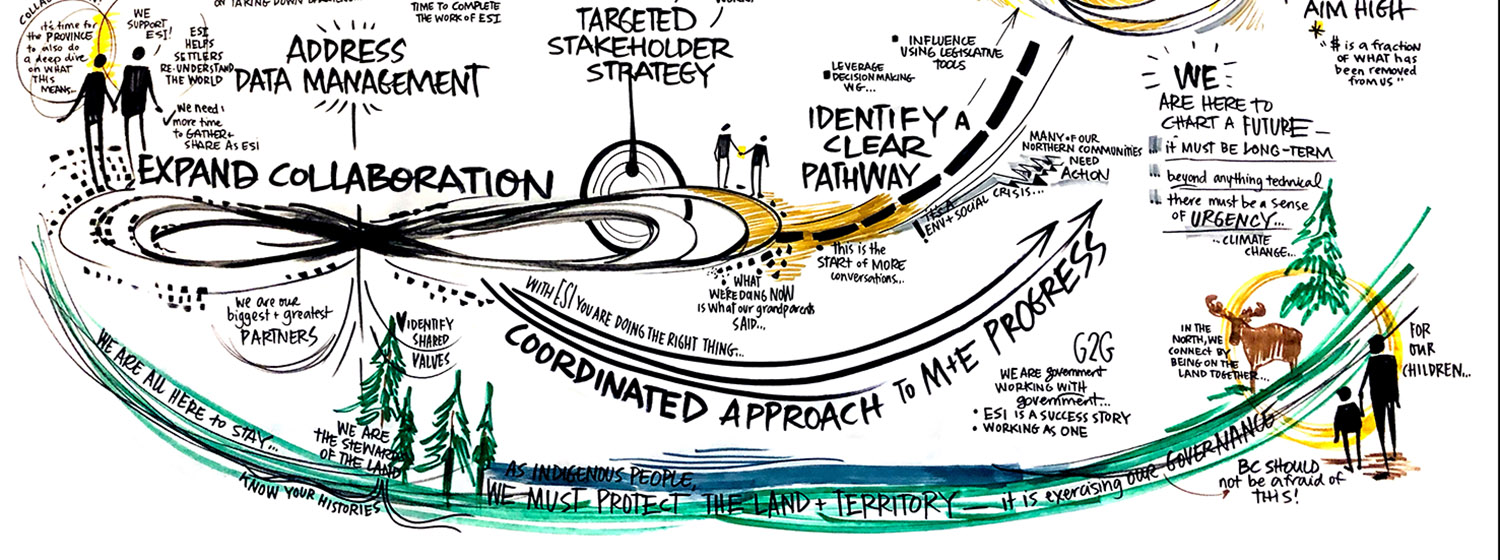
Graphic Recording to Support the Environmental Stewardship Initiative
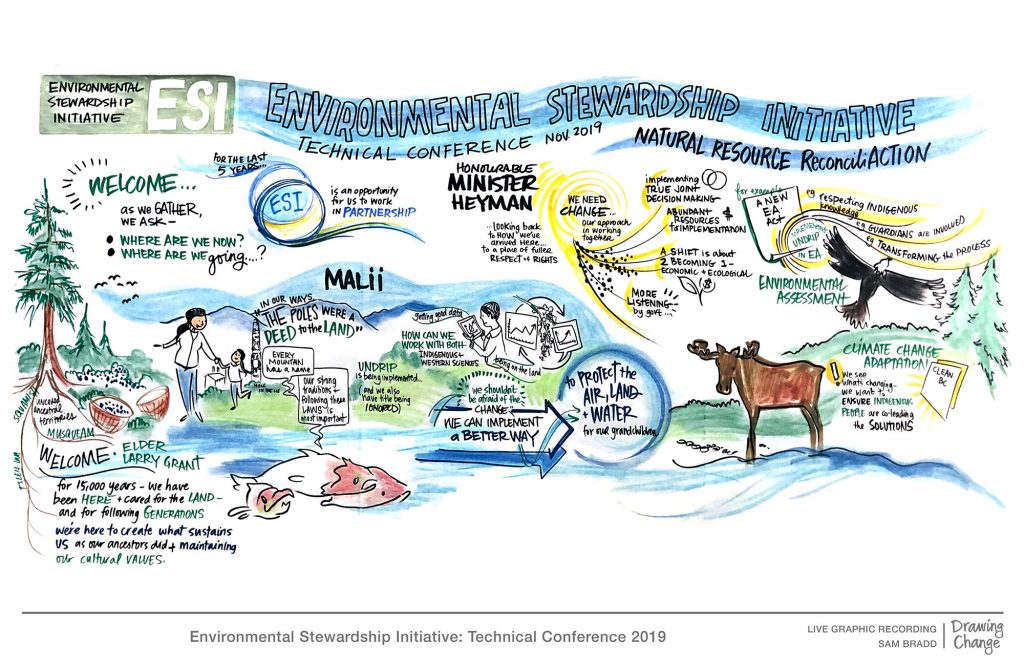 Trusted data comes in many forms. And trusted data can be qualitative, quantitative – and visual. This month, the Environmental Stewardship Initiative invited graphic recording to its Technical Conference – to help make visible many of the connections, goals, and collaborative design that are hallmarks of the ESI’s success.
Trusted data comes in many forms. And trusted data can be qualitative, quantitative – and visual. This month, the Environmental Stewardship Initiative invited graphic recording to its Technical Conference – to help make visible many of the connections, goals, and collaborative design that are hallmarks of the ESI’s success.
“ESI is a true collaboration between 30 First Nations and the Province in the north areas of British Columbia. It is focused on generating trusted data through collaborative design of cumulative effects assessment and monitoring of key values according to the priorities jointly identified in each area.” – ESI newsletter
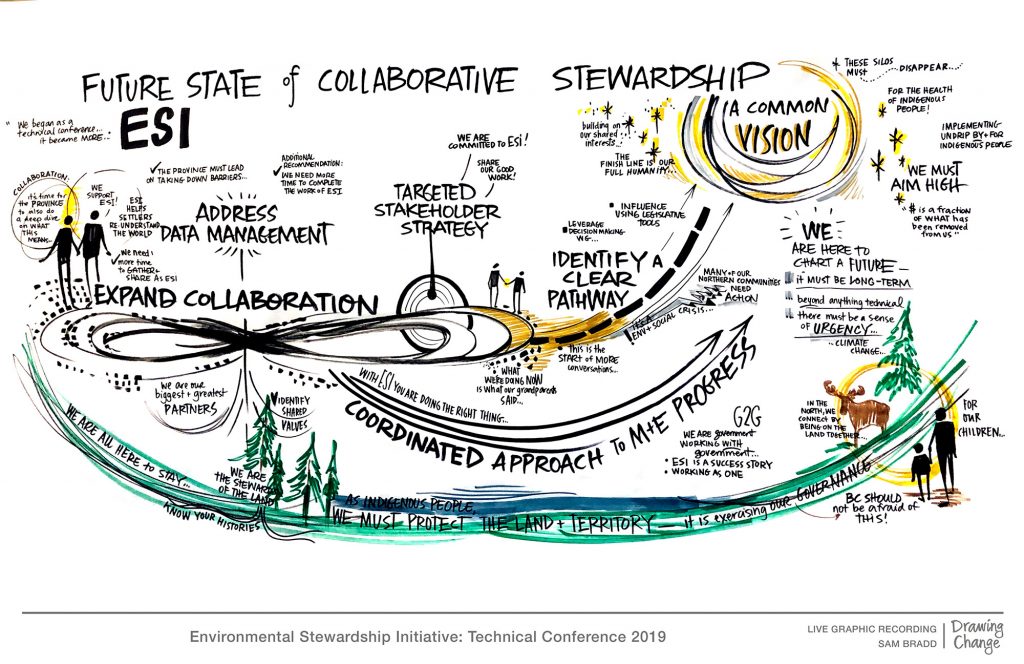
This important meeting was also about bringing the best available Western and Indigenous sciences together – and people talked proudly about the ESI process as being UNDRIP (UN Declaration on the Rights of Indigenous Peoples) in action.
Graphic Recording and Upholding Trusted Data Visually
For me, graphic recording of the 2-day technical meeting also needed to uphold the standard of trusted data. Part of the trust is how data is gathered, to whom it’s accountable, and how it’s shared or reflected back. To uphold trust, graphic recording practitioners can start from a place of good relationships and understanding of the issues. To be accountable, as practitioners we can work closely with the partners around us. For example, I collaborate with the other facilitator in the room – Dan George from Four Directions. I listen for nuances and themes in the dialogue, and then invite the audience and presenters to give me key feedback on anything that needs adjusting. And, while I listen and draw, I can think about how and with whom the images will be shared: will community members and other decision makers and people not yet in the room, be proud to see themselves represented in this way I’ve represented the information? will people on many sides of an issue feel their words have been upheld with dignity?
Data Governance and Ownership
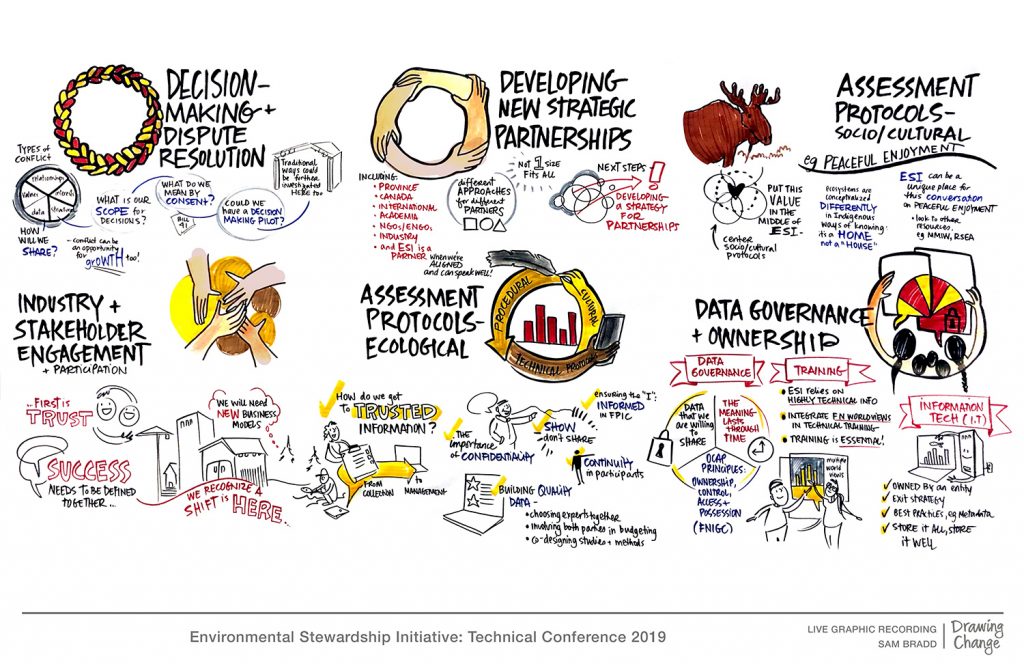
Data is power, and trusted data has many responsibilities. The conference also had multiple breakout sessions, and the session on data governance and ownership sparked my interest especially. The First Nations Information Data Governance Centre’s (FNIGC) principles of data Ownership, Control, Access and Protection are a high standard in the area of data and data sovereignty. Whenever I hand in my graphic recording posters for Indigenous organizations or to First Nations, I explicitly say the copyright is theirs under OCAP principles.
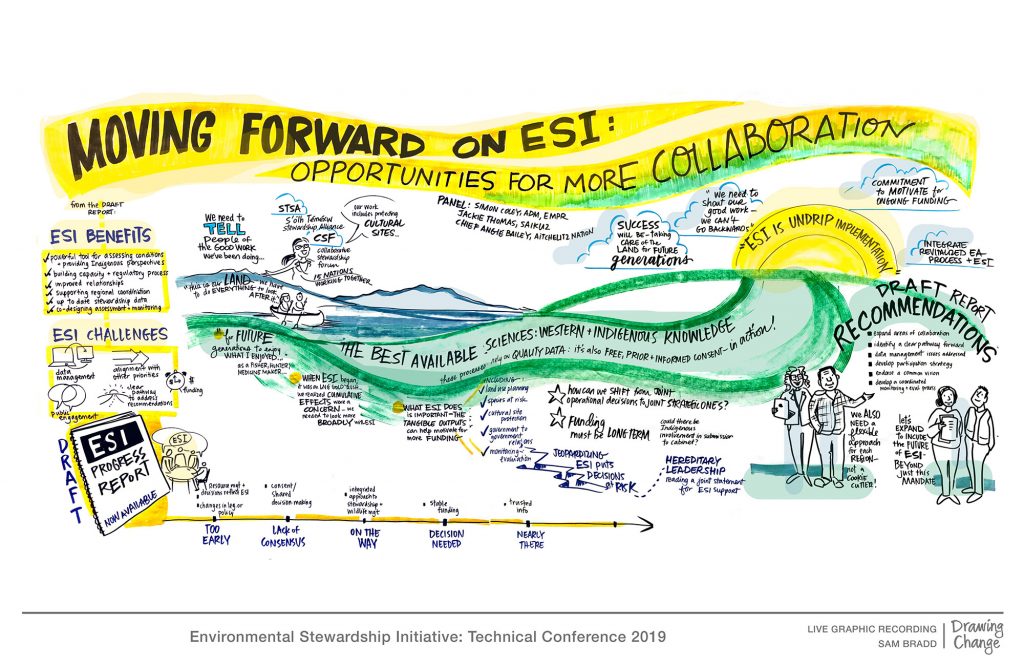
There are multiple themes moving forward – the need for expanded collaboration, data management, a coordinated approach to the monitoring and evaluation process, a clear path forward, and shared vision. Wishing ESI continued success, and collective momentum!